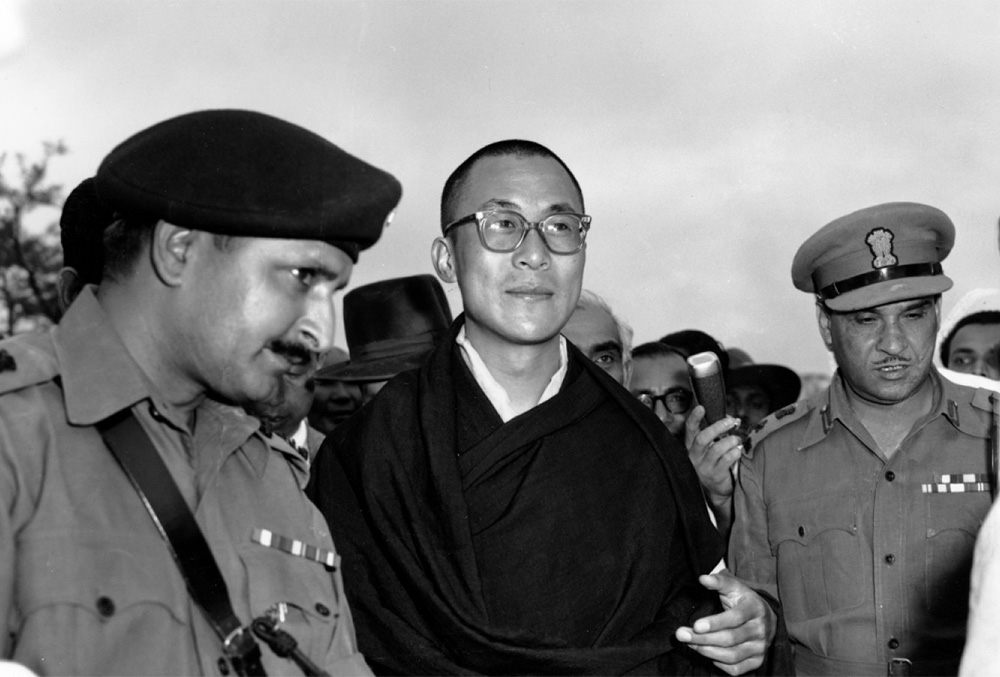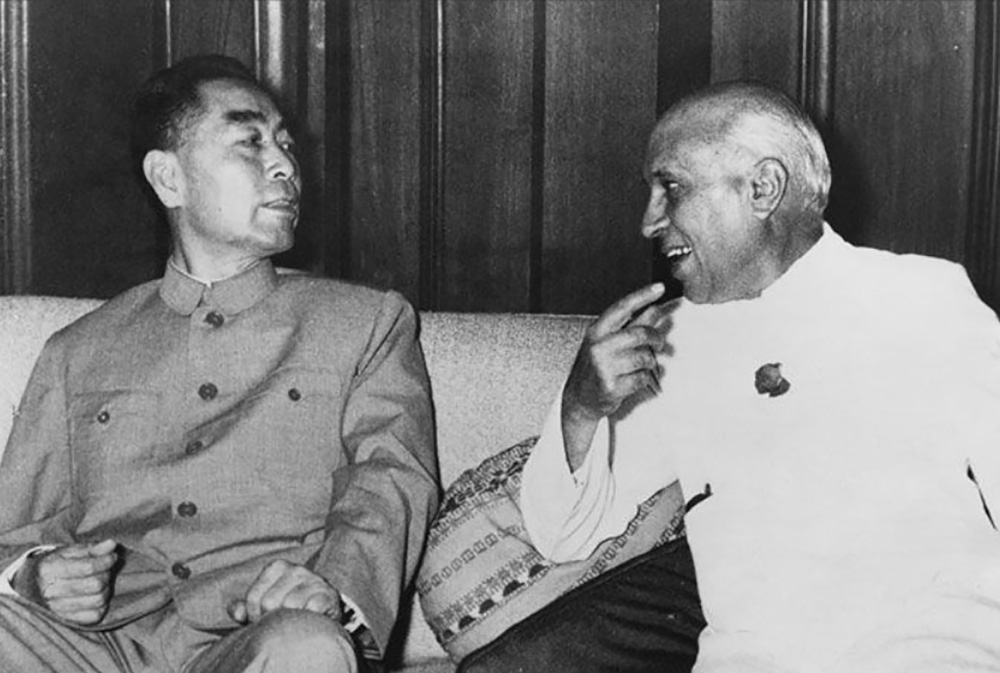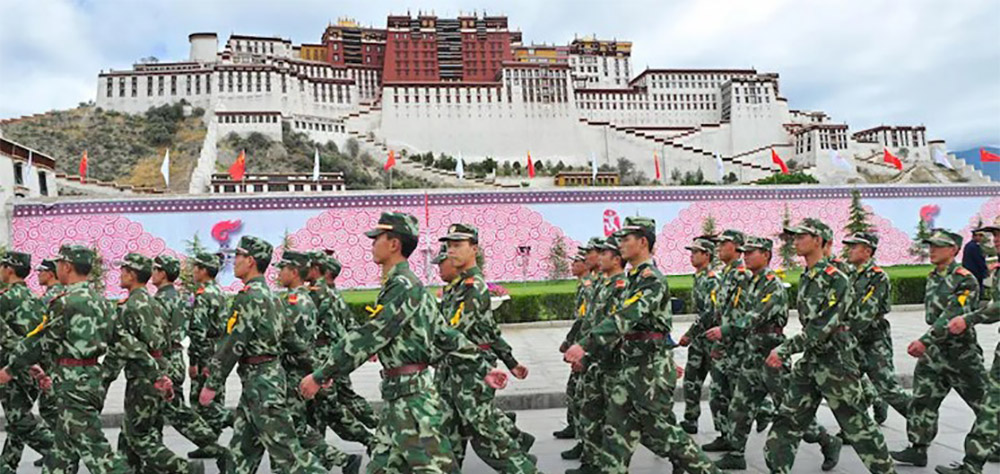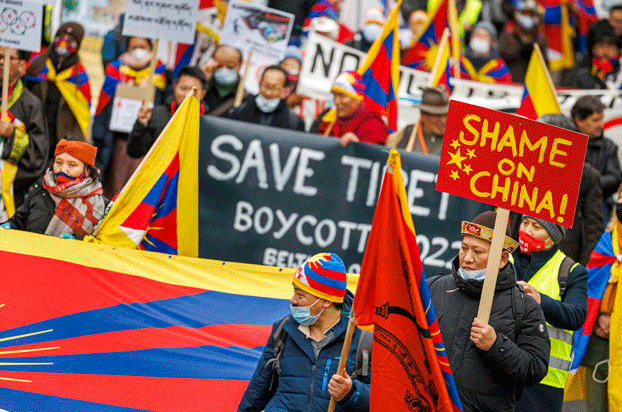Anthony Avice Du Buisson says the continued existence of Tibetans and their independence movement undermines the PRC’s narrative of an ethno-nationalist Chinese statehood – the creation of a homogenous Chinese Civilizational state encapsulated by President Xi Jinping’s vision of a China Dream – by showing the world that there is no peaceful coexistence and unity for all the country’s various ethnic minorities.
The 1959 Tibetan uprising altered the geopolitical landscape for the People’s Republic of China (PRC) after the imposition of the PRC’s statehood on the people of Tibet sparked widespread condemnation. This strained relations with neighboring states such as India and contributed to the internal Tibetan nationalist sentiment that flourishes today. This essay will demonstrate the impact that the 1959 uprising had on Tibet’s independence movement by first examining the background of the movement, from invasion to the Lhasa rebellion. Following from this an analysis of the geopolitical consequences of the uprising on the international community at the United Nations will then be taken with an assessment of the impact of border issues on Sino-Indian relations following shortly from that. Finally, an examination of the role of the modern Tibetan independence movement on conceptions of the Chinese statehood narrative and China Dream will be conducted.
The Tibetan Uprising in March 1959 was a revolt by the people of Tibet against the Chinese Communist Party (CCP). The CCP imposed a system of socialist reforms and land distribution reforms across the region after an invasion and occupation ended four decades of de-facto independence from China in 1950 (Kuzmin 2010, pp. 172-174). The CCP justified these reforms through the 1951 Seventeen-Point Agreement, an accord signed between plenipotentiaries of the Tibetan (Kashag) government–under duress–and Central People’s Government, known today as the State Council of the People’s Republic of China (Goldstein 2007, pp. 2331-33). The effective annexation and subsequent imposition of reforms aimed at dealing with the Tibetan ‘separatism’, which was antithetical to Mao Zedong’s vision of a united China (Jian 2006, pp. 57-62).
However, the People’s Liberation Army (PLA)-occupation led to widespread discontent, especially in the ethnographic regions of Kham and Amdo. These areas bore the brunt of repression by the PLA in the enforcement of ‘democratic reforms’ (Knaus 1999, p. 134), which aimed at changing the social strata away from feudalistic theocracy towards communism. Growing discontent led Tibetan people in areas like Kham to form militant groups, such as Chushi Gangdruk to fight against the PLA (Kuzmin 2010, pp. 222-225). A temporary halt to reforms mediated by the head of the Kashag government, the fourteenth Dalia Lama, was agreed upon, and a ‘Preparatory Committee for the Autonomous Region of Tibet’ (PCART) was established by the PRC in Lhasa in 1956 (Kuzmin 2010, pp. 196-198).
Resistance to PLA crackdowns intensified in subsequent years as Tibetans fearful of the erosion of their culture and values increasingly engaged in armed revolts (Jian 2006, pp. 69-71). An insurgency spread across the region and eventually culminated in Lhasa’s 1959-armed rebellion, otherwise known as the Anti-tyranny movement. Several thousand Tibetans mobilized on the morning of March 10th around the Dalai Lama’s summer palace, the Norbulingka, prompted by rumours that CCP officials aimed to arrest the Dalia Lama. This sparked a mass uprising against the PCART’s policies and calls for independence (Jian 2006, p. 71; Schaik 2013, pp. 232-234). Authorities in Beijing perceived the uprising as a revolt by the upper echelons of Lhasa against ‘democratic reforms’ aimed at transforming Tibet into a progressive region, which motivated Li Shaoqi to order further crackdowns against protestors (Jian 2006, pp. 72-6). Peaceful protests continued with thousands of women mobilizing under Pamo Kusang around cultural centers such as Potala Palace to call for independence (Vandenbrink 2021). A week into protests, the Dalai Lama along with officials from the Kashag fled to neighbouring India to establish a government in exile– ‘Central Tibetan Administration’ (CTA) (Jian 2006, pp. 75-78; Schaik 2013, pp. 234-236). The escape of the Dalai Lama prompted the PLA to begin the shelling of Lhasa and suppression of protests with live ammunition. This indiscriminate violence killed upward of eighty thousand Tibetans and signaled an end of co-rule, which was officiated on March 28th with Premier Zhou Enlai’s dissolving of Tibet’s local government (Jian 2006, p. 79). However, the repression of resistance in Lhasa by the PLA did not end the Tibetan independence movement and the Dalai Lama’s influence. Reactions by the international community from members of the United Nations such as the United States (US), Ireland and India elevated the Tibetan cause into the public consciousness.

The international community reacted with condemnation to the PLA’s repression in Lhasa and welcomed the Dalai Lama’s call for support for the Tibetan people. PRC’s push to consolidate control over Tibet through the PLA resulted in thousands of Tibetans dying and dozens of cultural religious centers such as monasteries being shut down (China/Tibet (1950-present) 2022). The concerted effort to secure the region through violence prompted condemnation from delegates at the United Nations. Six states–Burma (Myanmar), Ceylon (Sri Lanka), Ghana, India, Malaya, Norway and Siam (Thailand)–set up an inquiry into the matter of Tibet’s independence and human rights violations within its territory via the International Commission of Jurists (ICJ) in July 1959 (Singh 1992, pp. 280-81; Trikamdas 1959). A report issued in October that year by the ICJ titled, ‘The Question of Tibet and the Rule of Law’ found evidence that reaffirmed Tibet’s independence as a state, identified violations of its sovereignty by the PRC and an attempt by the PLA to, ‘destroy the Tibetan way of life by attacking its fundamental basics’ through commission of gross violations of human rights (Ibid; International Commission of Jurists 1959, p. 68). The report identified clear evidence that not only did the PRC attempt to annihilate the Tibetan people as a group, but that the narrative put forward by the Chinese government on the matter that emphasized no injustices were being carried out by the PLA in the region was false.
The Dalai Lama spent the entire year of 1959 petitioning the international community for action in response to the Tibetan crisis. UN Secretary-General Dag Hammarskjöld’s office received multiple appeals before the matter was raised on the Agenda in September of that year (China/Tibet (1950-present) 2022; Shakabpa and Maher 2009, pp. 1107-09). The Tibetan Advocacy group that put forward these appeals had a resolution finally adopted by the UN General Assembly following the ICJ’s report in October. This resolution reaffirmed principles of the United Nations Charter, rule of law and called for respect for human rights of the Tibetan people including their ‘distinctive cultural and religious life (Ibid)’. Two more resolutions received ascension in 1961 and 1965 but did little to change the circumstances on the ground for Tibetans (General Assembly).
Two state actors escalated support to the Tibetan resistance following the 1959 uprising in the form of training, logistics, and armaments. These were the United States and India. The US had been providing material support through the Central Intelligence Agency (CIA) since the 1956 Kham uprisings (McGranahan 2006, pp. 112-3). CIA officers operating out of Camp Hale in Colorado, US provided training, advice, assistance, and equipment to the Chushi Gangdruk Resistance and Mustang Army to counter-PRC operations in the wake of requests from the Kashag (Ibid, pp. 122-25). Following the uprising, Tibetan rebels and CIA paramilitary officers worked in concert with India to acquire important intelligence highlighting the PRC’s crimes in Lhasa (Ibid, pp. 119-20). The intelligence provided contributed to the Tibetan government in exile’s cause on a diplomatic level, and along with CIA support helped to bolster the Tibetan resistance in establishing bases in Nepal and India (Ibid). An important source of support to the Tibetan people for the years to come on a local and international level.
The Tibetan uprising in 1959 negatively strained Sino-Indian bilateral relations by pushing both states to conflict. Border tensions along the McMahon line that delineates Tibet from northern India existed prior to the breakdown of relations between India and China. These tensions originate from each country’s claim over territories that fall along this line, notably Aksai Chin in the western sector (Devereux 2009, pp. 72-4). India’s first Prime Minister, Jawaharlal Nehru attempted to stabilize these tensions by promoting friendship between both countries starting with the 1954 Panchsheel Agreement–recognizing China’s suzerainty over Tibet and seeking to promote PRC diplomatically on the world stage (Jacob 2011, p. 134-39).

Nehru’s efforts to foster friendship with China, motivated by an interest to demilitarize the Tibetan region to avoid potential border disputes, were unsuccessful (Garver 2011, pp. 104-05). The growing resistance in Kham region made the PRC suspicious of the Indian government. Mao Zedong and Zhou Enlai expressed distrust of India’s motives for friendship including with the Dalai Lama and this distrust only escalated in intensity following the 1959 uprising (Ibid). China put the blame for Tibetan resistance on India, sparking a mobilization of PLA troops on the border with India. The growing hostility from the Chinese side made Nehru’s attempts at reconciling differences increasingly untenable. PLA mobilization similarly was met with mobilization on the Indian side, as Nehru shifted away from policies of friendship to a policy of aggression to the PRC (Devereux 2009, pp. 72-74).
A conflict finally broke out in 1962 following years of swelling tensions along the border areas. Despite efforts to resolve the issue amicably in 1960, the Chinese rejected India’s claims on a major watershed in the western sector (Singh 1992, pp. 282; Garver 2011, pp. 101-02). China continued to advance deeper building roads, highways and outposts in Indian territory. Increased PLA presence in disputed territories were interpreted as provocation by the government in New Delhi. This prompted Nehru to order the establishment of military outposts to push PLA out of the Himalayan and Aksai chin territories (Ibid). This Sino-Indian war only lasted a couple weeks with a stalemate coming to fruition in November of 1962, but the conflict highlights the immediate impact of the 1959 Tibetan uprising on Chinese bilateral relations with neighboring states.

The Tibetan independence movement poses a significant obstacle to the PRC’s China Dream because Tibet has been considered part of China since ancient times. This narrative is spread and reinforced through a combination of diplomatic pressure, propaganda, and coercion. Trade, bilateral relations and security cooperation with states are assessed by the CCP through the lens of conformity with the Chinese statehood narrative–recognition of PRC authority over claimed territories (Dolma 2020). Domestic security forces impose forms of digital totalitarianism within the Tibetan autonomous region (TAR) to maintain control and stifle dissent. An example recently was the crackdown of Tibetan protestors in 2008 that saw dozens killed and hundreds arrested. These gross human rights violations extend to the forced labor of tens of thousands of Tibetans in labor camps along with the erosion of cultural and religious practices (Han & Paik 2013, pp. 70-78). Despite this large-scale repression of the Tibetan people, the Central Tibetan Administration, and representatives of various NGOs, IGOs and diaspora communities continue to raise awareness of the independence movement. Delegates of CTA and the Dalai Lama have advocated for Tibet’s struggle over the last six decades–meeting hundreds of different leaders, speaking at multiple conferences and raising the profile of the movement (Ardley 2002, pp. 42-45). These efforts are not left unnoticed as international pressure is increasingly being imposed on the PRC to address violations to the rights of ethnic minorities.
The existence of Tibetans and their independence movement undermines the PRC’s narrative of Chinese statehood by showing the world that there is no peaceful coexistence and unity for all the country’s various ethnic minorities. Xi Jinping’s Chinese Dream encapsulates a vision of China that the CCP aims to project to the world. The China Dream embodies the party’s ideological perception of the state’s role in history, on the global stage, in society and in the lives of its people. Xi’s vision aims to restore China’s position as the preeminent global superpower in the world through the rejuvenation of the nation and the revitalization of its industries (Allison 2017). Rejuvenation of the nation is a central concept to the China Dream, as it encapsulates the pursuit of ethnonationalism through the creation of a homogenous Chinese Civilizational state (Yeoh & Cheng 2016, pp.678-680). As part of Xi’s vision, ethnic minorities that are not part of the Han identity, and regions such as Xinjiang and Tibet that have historically shown resistance to homogeneity, are obstacles to this vision. Sinofication of these regions to dilute their ethnic populations is of paramount concern for the CCP. Xi’s persistent denial of ethnic erasure in these areas and the claims of “peaceful coexistence” between these minorities and the majority run contrary to the state’s policies (Kallio 2019, pp.3-6).

The PRC invests substantial amounts of money in the securitization of regions such as Xinjiang and Tibet (Chin 2018). These areas in comparison to the rest of the country receive heavy police monitoring with native ethnic groups forced to face targeted searches and penalties by authorities. Along with authoritarian policies, such as DNA collection, directed towards groups like Tibetans, there are also efforts to erase the local population through the migration and placement of predominantly Han Chinese (Human Rights Watch 2022). This form of ethnic erasure is centered around changing the demographic makeup of the regions with the aim of making Xi’s vision of rejuvenation more achievable. To quote Tibetan exiled writer Tsering Woeser, when speaking about the lives of Tibetans living within the TAR who did not feel Chinese, there is simply “no room for Tibetans in the Chinese Dream” (Dalha 2013).
The Anti-tyranny Movement of 1959 transformed the geopolitical landscape for the People’s Republic of China. Following the authoritarian imposition of Chinese Communist Party rule over an independent Tibet in 1951, Tibetan people organized into resistance movements with the goal of independence and faced widescale crackdowns from the People’s Liberation Army. A decade of brutality at the hands of the PLA culminated in the mass uprising in Lhasa of 1959 that saw the Dalai Lama exiled to neighboring India and thousands killed. An investigation into the killings by the International Commission of Jurists and petitioning from the Tibetan government in exile prompted condemnation at the United Nations. The uprising significantly influenced the deterioration of Sino-Indian relations between the Nehru and Mao governments, exacerbating existing border disputes and culminating in war between both countries. Decades later and the consequences from the 1959 uprising are still present today, as the Tibetan Independence movement continues to fight for an independent Tibet. Xi Jinping’s China Dream that aims at a rejuvenation of China through the imposition of sinofication, and other authoritarian polices, poses another threat to that fight. The threat may be new, but its origins are found in the events following the mass uprising of 1959.
***
Anthony Avice Du Buisson is an Australian-based freelance writer who writes on politics, foreign policy, and the Middle East with a focus on minority rights. He has written for online syndications such as The Region, The Jerusalem Post and Areo Magazine. Anthony is currently studying a double-degree in a Bachelor of Arts with a Major in Politics and International Relations and a Bachelor of Laws (Honours) at James Cook University in Australia.
List of References
China/Tibet (1950-present) 2o22, University of Central Arkansas, viewed 3 October 2022, <https://uca.edu/politicalscience/dadm-project/asiapacific-region/chinatibet-1950-present/>.
Allison, G 2017, ‘What Xi Jinping Wants’, The Atlantic, viewed 6 October 2022, <https://www.theatlantic.com/international/archive/2017/05/what-china-wants/528561/>.
Ardley, J 2002, ‘Chapter 2. Resistance in Tibet: Violence and exile’, in The Tibetan Independence Movement: Political, Religious and Gandhian Perspective, Taylor & Francis Group, pp. 27-45, < https://www.routledge.com/The-Tibetan-Independence-Movement-Political-Religious-and-Gandhian-Perspectives/Ardley/p/book/9781138862647>.
Chin, J 2018, ‘China Spends More on Domestic Security as Xi’s Powers Grow’, The Wall Street Journal, viewed 9 October 2022, <https://www.wsj.com/articles/china-spends-more-on-domestic-security-as-xis-powers-grow-1520358522>.
Dalha, T 2013, ‘Xi Jinping’s China Dream’, Tibet Policy Institute, viewed 5 October 2022, <https://tibetpolicy.net/xi-jinpings-china-dream/>.
Devereux, DR 2009, ‘The Sino-Indian War of 1962 in Anglo-American Relations’, Journal of Contemporary History, vol. 44, no. 3, pp. 71-87, viewed 3 October 2022, SAGE Publications, <https://www.jstor.org/stable/40543074>.
Dolma, K 2020, ‘Tibet Was China’s First Laboratory of Repression’, Foreign Policy Magazine, viewed 5 October 2022, <https://foreignpolicy.com/2020/08/31/tibet-china-repression-xinjiang-sinicization/>.
Garver, J 2011, ‘The Unresolved Sino-Indian Border Dispute: An interpretation’, China report (New Delhi), vol. 47, no. 2, pp. 99-113, viewed 3 October 2022, SAGE Publications, <https://journals.sagepub.com/doi/10.1177/000944551104700204>.
General Assembly, Tibet Advocacy Coalition, viewed 2 October 2022, < https://tibetadvocacy.org/our-work/general-assembly/>.
Goldstein, MC 2007, ‘Chapter 8. The Advance PLA Force Arrives in Lhasa’, in A History of Modern Tibet: The Calm before the storm: 1951-1955, vol. 2, pp. 206-43, Dev Books, <https://academic.oup.com/california-scholarship-online/book/28550/chapter-abstract/238539540?redirectedFrom=fulltext>.
Han, E & Paik, C 2013, ‘Dynamics of Political Resistance in Tibet: Religious Repression and Controversies of Demographic Change’, The China Quarterly, vol. 217, pp. 69-98, viewed 3 October 2022, ProQuest, <https://www.cambridge.org/core/journals/china-quarterly/article/abs/dynamics-of-political-resistance-in-tibet-religious-repression-and-controversies-of-demographic-change/147E989F001EAEEB35C03F2034A6A14A>.
Human Rights Watch, 2022, ‘China: New Evidence of Mass DNA Collection in Tibet: Rural Areas, Children Targeted for Intrusive Policing’, HRW, viewed 4 October 2022, < https://www.hrw.org/news/2022/09/05/china-new-evidence-mass-dna-collection-tibet>.
International Commission of Jurists 1959, The Question of Tibet and the Rule of Law, viewed 2 October 2022, < https://www.icj.org/new-report-the-question-of-tibet-and-the-rule-of-law/>.
Jacob, JT 2011, ‘For a New Kind of ‘Forward Policy’: Tibet and Sino-Indian Relations’, Institute of Peace and Conflict Studies (New Delhi), vol. 47, no. 2, pp. 133-146, viewed 3 October 2022, SAGE Publications, <https://journals.sagepub.com/doi/abs/10.1177/000944551104700206?journalCode=chra>.
Jian, C 2006, ‘The Tibetan Rebellion of 1959 and China’s Changing Relations with India and the Soviet Union’, Journal of Cold War Studies, vol. 8, no. 3, pp. 54-101, viewed 18 August 2022, JSTOR, <https://www.jstor.org/stable/26925942>.
Kallio, J 2019, ‘The Sinification of China: How the minorities are being merged into one nation’, Finish Institute of International Affairs, viewed 3 October 2022, <https://www.fiia.fi/en/publication/the-sinification-of-china>.
Knaus, RK 1999, Orphans of the Cold War: America and the Tibetan Struggle for Survival, Public Affairs, New York, viewed 17 August 2022, Internet Archive, < https://archive.org/details/orphansofcoldwar0000knau>.
Kuzmin, SL 2010, ‘Chapter 7. “Peaceful Liberation” and Its Consequences’, in Hidden Tibet: History of independence and Occupation, trans. D Bennett, Library of Tibetan Works and Archives, New Delhi, pp. 157-206, viewed 18 August 2022, <http://savetibet.ru/img/2010/tibet-book-eng.pdf>.
Kuzmin, SL 2010, ‘Chapter 8. From the People’s Uprising to the Cultural Revolution’, in Hidden Tibet: History of independence and Occupation, trans. D Bennett, Library of Tibetan Works and Archives, New Delhi, pp. 207-286, viewed 19 August 2022, <http://savetibet.ru/img/2010/tibet-book-eng.pdf>.
McGranahan, C 2006, ‘Tibet’s Cold War: The CIA and the Chushi Gangdrug Resistance, 1956-1974’, Journal of Cold War Studies, vol. 8, no. 3, pp. 102-130, viewed 2 October 2022, JSTOR, <https://www.jstor.org/stable/26925943>.
Schaik, VS 2013, Tibet: A History, Yale University Press, New Haven.
Singh, AJ 1992, ‘How the Tibetan Problem Influenced China’s Foreign Relations’, China Report (New Delhi), vol. 28, no. 3, pp. 259–290, viewed 2 October 2022, SAGE Publications, <https://journals.sagepub.com/doi/abs/10.1177/000944559202800306?journalCode=chra>.
Shakabpa, WD & Maher, DF 2009, ‘Chapter Twenty-Three. Dalai Lama’s Appeal To The United Nations Upon Arriving In India’, in One Hundred Thousand Moons: An Advanced Political History of Tibet, vol. 23, pp. 1107–1138, Brill Publishers, <https://brill.com/display/book/9789047430766/Bej.9789004177321.1-1260_025.xml>.
Trikamdas, SP 1959, Summary of a report on Tibet: submitted to the ICJ by Shri Purshottam Trikamdas, International Commission of Jurists, viewed 2 October 2022, <https://www.icj.org/summary-of-a-report-on-tibet-submitted-to-the-international-commission-of-jurists-by-shri-purshottam-trikamdas-senior-advocate-supreme-court-of-india/>.
Vandenbrink, R 2021, Women Energize Tibetan Struggle, Radio Free Asia, viewed 16 August 2022, < https://www.rfa.org/english/news/tibet/women-03052012193309.html>.
Yeoh, EKK & Cheng, JYS 2016, ‘From Handover to Occupy Campaign: Democracy, Identity and the Umbrella Movement of Hong Kong’, Contemporary Chinese Political Economy and Strategic Relations: An International Journal, vol. 2, no. 2, pp. 635-984, viewed 4 October 2022, <https://icaps.nsysu.edu.tw/var/file/131/1131/img/2375/208456099.pdf>.



